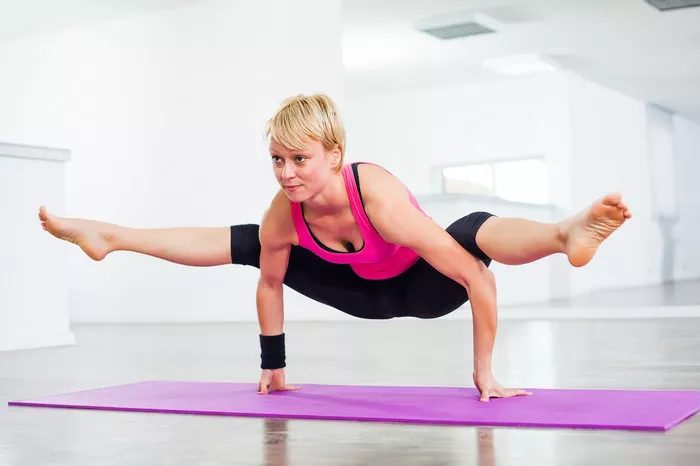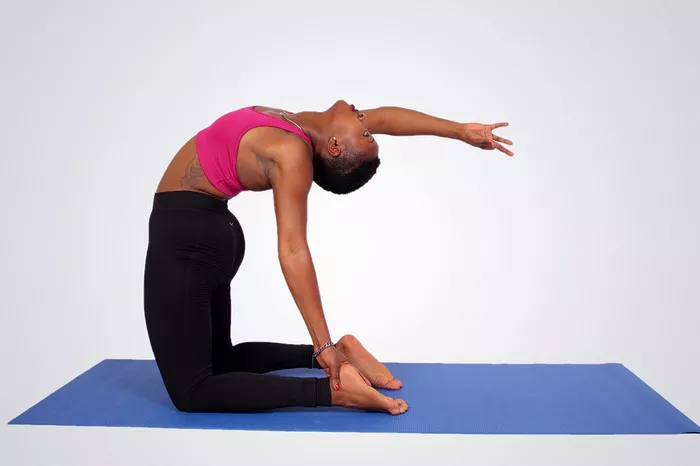Origins and Symbolism
The Firefly Pose, known as Tittibhasana in Sanskrit, is a dynamic and invigorating arm balance that finds its roots in ancient Indian yoga traditions. The name Tittibhasana derives from the Sanskrit words “tittibha,” meaning “firefly,” and “asana,” meaning “pose.” The firefly, a creature that emits light in darkness, symbolizes inner light and transformation in many cultures. Similarly, the Firefly Pose challenges practitioners to cultivate inner strength and radiance through physical and mental perseverance.
The pose is deeply connected to the principles of Hatha Yoga, which emphasizes the balance between effort and ease. Historically, it has been practiced to develop physical agility, mental focus, and spiritual enlightenment. The firefly’s symbolism of light and transformation is mirrored in the pose’s ability to illuminate the practitioner’s path to inner strength and flexibility.
Physical and Mental Benefits
Physical Benefits
1. Strengthens Arms and Wrists: The Firefly Pose requires significant arm and wrist strength to support the body’s weight. Regular practice enhances the muscles in the shoulders, arms, and wrists, promoting stability and endurance.
2. Enhances Core Strength: Maintaining balance in Tittibhasana engages the core muscles, including the abdominals and obliques. This strengthens the core, contributing to better posture and overall physical stability.
3. Increases Hip Flexibility: The pose demands a deep hip opening, which stretches and strengthens the hip flexors, groin, and inner thighs. This can alleviate tension and improve mobility in the hip region.
4. Improves Balance and Coordination: Balancing on the hands while keeping the legs extended challenges the body’s equilibrium, enhancing proprioception and overall coordination.
5. Boosts Spinal Health: The Firefly Pose promotes spinal alignment and flexibility, reducing the risk of back injuries and improving overall spinal health.
See Also: 8 Yoga Poses for the Sacral Chakra
Mental Benefits
1. Cultivates Concentration: Achieving and maintaining the Firefly Pose requires intense focus and concentration, which can improve mental clarity and the ability to concentrate in daily activities.
2. Builds Confidence: Mastering such a challenging pose fosters a sense of accomplishment and confidence, empowering practitioners to tackle other challenges both on and off the mat.
3. Reduces Stress: The concentration and deep breathing required in Tittibhasana help to calm the mind, reducing stress and anxiety levels.
4. Promotes Mind-Body Connection: The pose encourages mindfulness, fostering a deeper connection between the body and mind. This holistic awareness can enhance overall well-being and mental health.
5. Enhances Patience and Perseverance: The journey to mastering the Firefly Pose is often long and requires patience and perseverance, qualities that can be applied to other areas of life.
Variations and Modifications
Variations
1. Baby Firefly Pose (Balasana Tittibhasana): This beginner-friendly variation involves keeping the knees slightly bent and the feet closer to the ground, reducing the intensity of the pose while still providing a challenge.
2. One-Legged Firefly Pose (Eka Pada Tittibhasana): In this advanced variation, one leg is kept extended while the other leg is bent and lifted off the ground. This adds an extra layer of difficulty and requires greater balance and strength.
3. Firefly Pose with Blocks: Using yoga blocks under the hands can elevate the body, making it easier to lift the legs and find balance. This is a helpful variation for those building up the necessary strength and flexibility.
Modifications
1. Bent Knees: Practitioners with tight hamstrings or hip flexors can keep the knees slightly bent to make the pose more accessible while still reaping the benefits.
2. Using a Wall: Performing the pose near a wall can provide extra support and balance, especially for those who are new to arm balances.
3. Strap Support: Using a yoga strap around the upper arms can help maintain proper alignment and support the shoulders, reducing the risk of strain or injury.
Step-by-Step Instructions
1. Begin in a Standing Forward Bend (Uttanasana): Start by standing with your feet hip-width apart. Fold forward from the hips, allowing your hands to touch the ground.
2. Prepare for the Pose: Bend your knees deeply and bring your palms to the floor, shoulder-width apart, slightly in front of your feet. Ensure your fingers are spread wide for better grip and stability.
3. Position the Legs: Gently lift your heels off the ground and position your knees as high as possible onto your upper arms, just above the elbows. Engage your inner thighs to keep the knees in place.
4. Lift the Feet: Shift your weight onto your hands and begin to lift one foot off the ground, followed by the other. Keep your gaze slightly forward to maintain balance.
5. Extend the Legs: Once you are balanced on your hands, start to straighten your legs out to the sides. Engage your core muscles to lift your hips higher and maintain stability.
6. Hold the Pose: Keep your arms strong and engaged, pressing firmly into the ground. Hold the pose for a few breaths, maintaining a steady and calm demeanor.
7. Release: To come out of the pose, bend your knees and slowly lower your feet back to the ground. Return to a standing forward bend and then slowly rise to a standing position.
Precautions and Contraindications
1. Wrist Issues: Those with wrist pain or carpal tunnel syndrome should avoid the Firefly Pose or use modifications to prevent exacerbating the condition.
2. Shoulder Injuries: Practitioners with shoulder injuries should be cautious and may need to avoid the pose, as it places significant weight on the shoulder joints.
3. Lower Back Problems: Individuals with lower back issues should avoid deep forward bends and arm balances that may strain the back further.
4. Pregnancy: Pregnant women should avoid the Firefly Pose due to the intense core engagement and potential risk of falling.
5. Lack of Warm-Up: Attempting the Firefly Pose without proper warm-up can lead to muscle strain or injury. It is essential to thoroughly warm up the body, especially the wrists, hips, and core, before attempting this pose.
Tips for Safe Practice
1. Warm Up Properly: Ensure your wrists, hips, and hamstrings are adequately warmed up with poses like Downward Dog, Hip Openers, and Forward Bends before attempting Tittibhasana.
2. Use Props: Don’t hesitate to use yoga blocks, straps, or a wall for support, especially if you are new to the pose.
3. Listen to Your Body: Pay attention to your body’s signals and avoid pushing through pain or discomfort. Progress gradually and mindfully.
4. Seek Guidance: If you are unsure about your alignment or technique, consider practicing under the guidance of a certified yoga instructor to avoid injury and ensure correct form.
Conclusion
In conclusion, the Firefly Pose is a challenging yet rewarding addition to any yoga practice. By embracing its origins and symbolism, practitioners can find deeper meaning and motivation in their practice. The physical and mental benefits of Tittibhasana extend beyond the mat, fostering strength, flexibility, and inner illumination. With variations and modifications available, this pose can be adapted to suit different levels, making it an accessible goal for many yoga enthusiasts. Always practice with mindfulness and respect for your body’s limits to fully enjoy the transformative journey of the Firefly Pose.
























